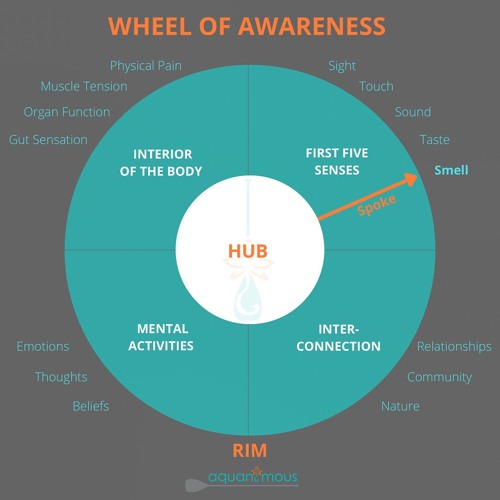 Chapter 5 in Susan Craigs Trauma Sensitive Schools asked me to look at and examine the way I design my classroom and how it meets best practices with children’s neurodevelopment. In order to enhance children’s development I need to first begin with establishing a positive relationship, extend the physical aspects, and set the emotional tone of the classroom (p. 61). This I believe is key for all students at I typically set up my relationships and expectations right off at the beginning of the year. Craig (2016), elaborates that it is crucial for teachers to help students regulate their feelings, behavior, build self esteem, have high expectations but scaffold so that students are successful, set goals, and to create a zone of comfort.
Chapter 5 in Susan Craigs Trauma Sensitive Schools asked me to look at and examine the way I design my classroom and how it meets best practices with children’s neurodevelopment. In order to enhance children’s development I need to first begin with establishing a positive relationship, extend the physical aspects, and set the emotional tone of the classroom (p. 61). This I believe is key for all students at I typically set up my relationships and expectations right off at the beginning of the year. Craig (2016), elaborates that it is crucial for teachers to help students regulate their feelings, behavior, build self esteem, have high expectations but scaffold so that students are successful, set goals, and to create a zone of comfort.
First off I need to change my language before I even begin and intentionally work towards being better, as I read texts the term “traumatized children or child” is used. Personally I do not think we should be labelling them as such just like we do not label children as an autistic child, we say a child who has autism, so in the same way I would like to make an effort to say a child who has experienced trauma. Person first!
So how do we (meaning me) do this? Well…
Customize instruction
Differentiated instruction is like peanut butter and jelly to me, it just is something that is natural and what I do. I will meet the child where they are at and be flexible enough to create a plan where the child will be successful. Under trauma sensitive differentiated instruction Craig (2016), offers 3 neural networks that accompany learning: recognition network, strategic network, and affective network. Furthering my understanding of the kind of differentiated instruction someone with trauma may need I investigated further in how I could best support in these 3 areas.
Recognition Network “What of Learning”– Children who have experienced trauma tend to miss out on key information or content when it is being presented to them in class as they are paying more attention to my tone, my facial expressions, and my body language. I need to be more aware of this especially when I am reading; I tend to get right into books and read with expression, pizazz as you may say, with a tad bit of excitement. I can see how what I am reading and hoping a child would get out my production could be hindered by the delivery. It is going to be up to me to ensure the “what” is delivered to them in a more clear manner with maybe less of the pizazz or keeping the what is needed to be learned in the forefront of my mind more directly.
Strategic Network “How of Learning”– This section Craig (2016), discussed how children plan, perform, organize, and express their ideas. This area of the child’s brain, the executive functioning in extremely compromised as children are often in a heightened chronic state of hyperarousal and it affects their ability to pay attention and their working memory. Many times children will act then think, or give up easily when a task is too challenging or is fairly new. Oh how I failed here this week… I needed to build up capacity (even though I thought I did), teach a child to think strategically, and to scaffold, scaffold, scaffold. Tools that were suggested were word banks, number lines, calculators, and predictive software (p. 64). Children also need to have explicit instruction. I typically run guided math where I have the opportunities to build on the close student-teacher collaboration and teach explicitly, assist where I see frustrations arise quickly, and adapt as needed. This can become tricky as we venture into other curriculum areas because I am not always available to assist specific individual students all the time; the other students in the classroom also need my attention. So I can see there would be a need for a delicate balance here.
Affective Network “Why/How of Learning“- This area involves knowing how to gain children’s attention, engage their interests, keep them engaged, and keep their effort. This however heavily relies on the teachers willingness to continuously keep instruction interesting so that the child’s interest and effort continues to be sustained. This also requires there to be conversations between the child and the teacher so that a child then becomes to understand that the adult/teacher is interested in them and willing to accommodate to their learning needs. A huge part of this is giving a student a voice. Craig (2016), provides ways that I can do this in my classroom, give positive feedback, praise their effort, offer choice making, and help set personal goals.
Safety is apart of the affective network, it is also my number one classroom belief. Above everything and anything within the walls of my classroom I care the most about the children’s safety. Craig (2016), states that a way I can support a student who has experienced trauma in the area of safety is to be predictable, have predictable classroom routines, visual schedules, calendars, charts, visual timers, and to ensure that if there is going to be a change in the day that I prepare them for such an event by letting them know about it to help them anticipate. This will help with emotional distress such as anxiety when things can be more predictable and a child can then focus more on classroom instruction.
Resources for Responding to Violence and Tragedy magazine article also laid on some important pieces that affirm many topics I have already discussed:
- be patient
- set time aside for check ins
- ensure the student has a person (even if it is not you) who they can talk to
- have a plan for when a child needs to leave the room for a break
- be available
- ask questions
- follow their lead
- discussions should be at an age appropriate level
- give students some leeway
- provide reassurance
https://classroommagazines.scholastic.com/home-page-logged-out/resources-for-responding-to-violence-and-tragedy.html?eml=CM/20220525///txtl/smd
The Trauma Sensitive Teacher article by Susan Craig, writer of the Trauma Sensitive Schools book continues to showcase that “A child’s brain architecture changes as a result of trauma. These changes jeopardize children’s ability to direct their attention,regulate their emotions and behavior, and form positive relationships with teachers. However, with the right training and support,teachers can collaborate with these children in ways that help them move beyond past traumas and embrace the benefits of rich educational experiences”
Teachers can do this by:
- forming positive relationships,

- directing attention by establishing predictable and consistent routines,
- using visuals,
- giving notice to changes,
- developing lesson that follow a predictable format,
- giving prompts for when to pay attention,
- teach students to learn to control their emotions
- use of awareness wheel
- regulating emotions and behavior
- mindfulness
- meditation
- check ins
- self soothing activities
- easy access to non verbal stress busters (ex. figets)
I have included a direct link to the article being mentioned the trauma-sensitive teacher